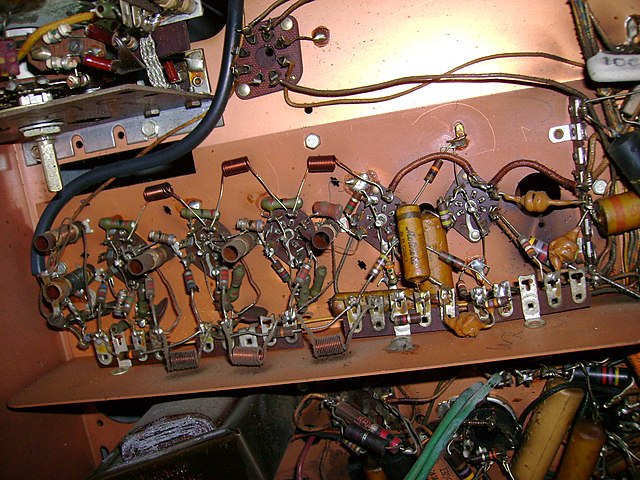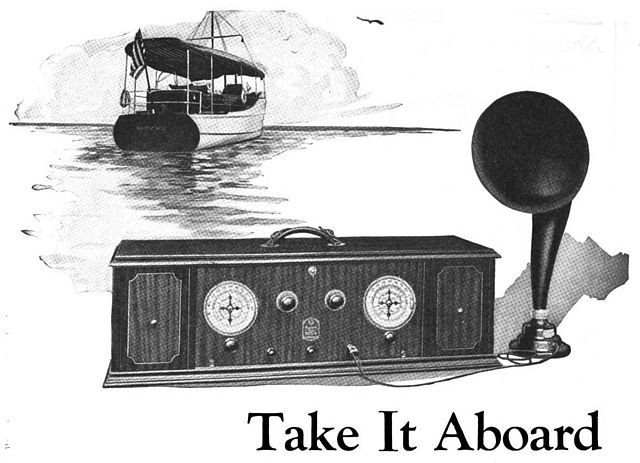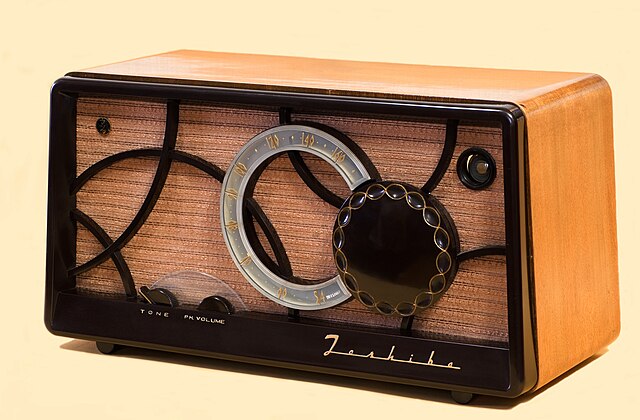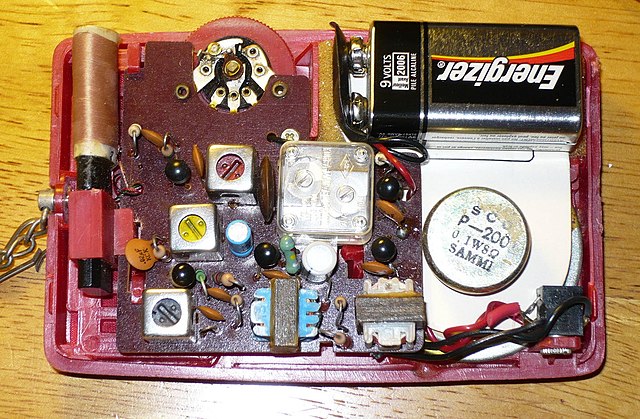In communications and electronic engineering, an intermediate frequency (IF) is a frequency to which a carrier wave is shifted as an intermediate step in transmission or reception. The intermediate frequency is created by mixing the carrier signal with a local oscillator signal in a process called heterodyning, resulting in a signal at the difference or beat frequency. Intermediate frequencies are used in superheterodyne radio receivers, in which an incoming signal is shifted to an IF for amplification before final detection is done.
The IF stage from a Motorola 19K1 television set circa 1949
The RCA Radiola AR-812 used 6 triodes: a mixer, local oscillator, two IF and two audio amplifier stages, with an IF of 45 kHz.
A superheterodyne receiver, often shortened to superhet, is a type of radio receiver that uses frequency mixing to convert a received signal to a fixed intermediate frequency (IF) which can be more conveniently processed than the original carrier frequency. It was invented by French radio engineer and radio manufacturer Lucien Lévy. Virtually all modern radio receivers use the superheterodyne principle.
A 5-tube superheterodyne receiver manufactured by Toshiba circa 1955
Superheterodyne transistor radio circuit circa 1975
One of the prototype superheterodyne receivers built at Armstrong's Signal Corps laboratory in Paris during World War I. It is constructed in two sections, the mixer and local oscillator (left) and three IF amplification stages and a detector stage (right). The intermediate frequency was 75 kHz.
The first commercial superheterodyne receiver, the RCA Radiola AR-812, released on March 4, 1924, priced at $286 (equivalent to $5,080 in 2023). It used 6 triodes: a mixer, local oscillator, two IF and two audio amplifier stages, with an IF of 45 kHz. It was a commercial success, with better performance than competing receivers.





